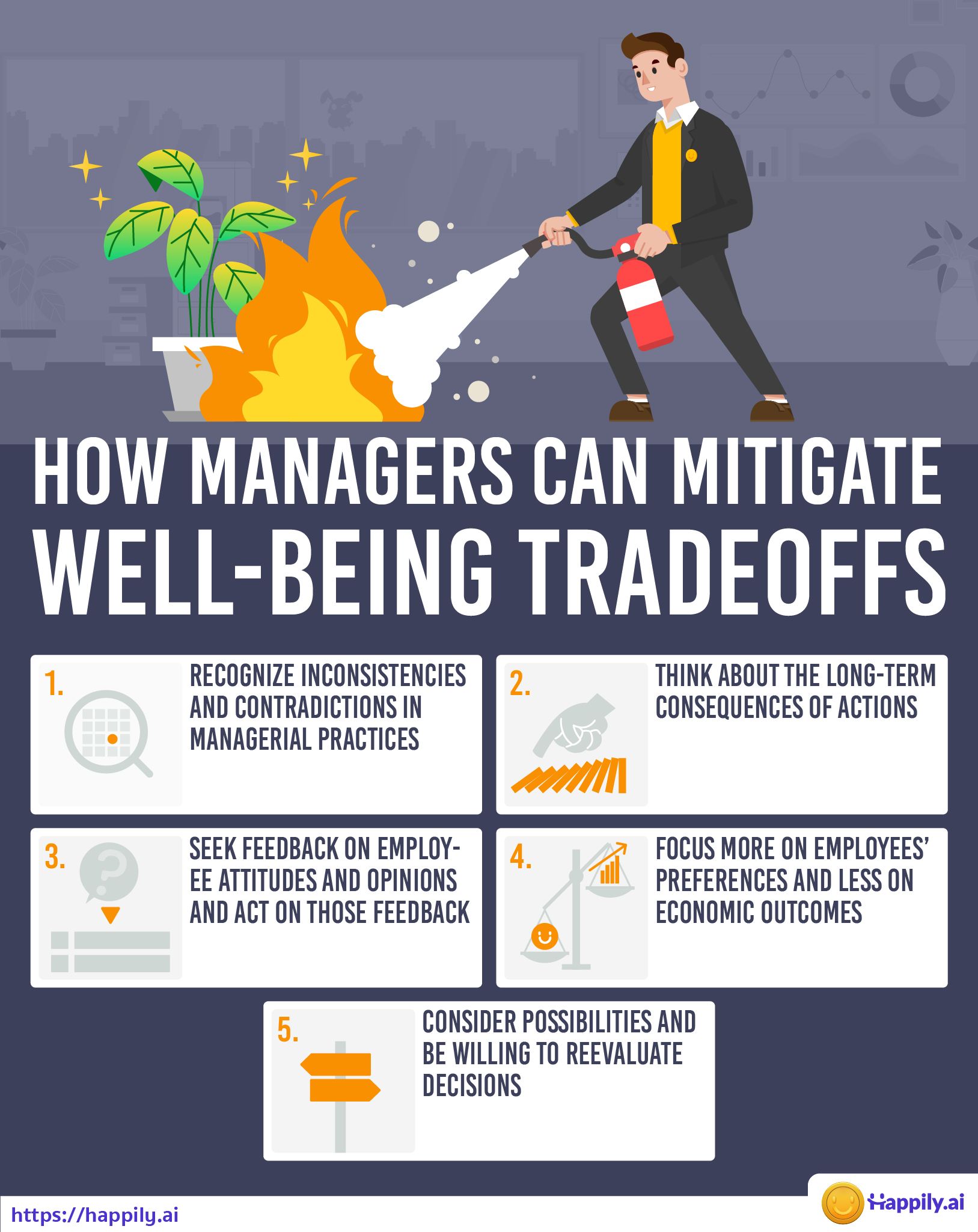What is Employee well-being?
Employee well-being is a critical component of all aspects of employee engagement. It refers to the state of employees' physical and mental health. Employees who participate in wellness programs tend to be less stressed, happier, and more productive. Measures can be taken to promote a culture of well-being and this is an area that many employers are now looking at as a way to retain valuable staff, improve performance and productivity.
Employee well-being leads to positive outcomes such as increasing employees’ organizational citizenship behavior and job performance and decreasing absenteeism and turnover. Most agree that making employees happier and healthier increases their effort, contributions, and productivity. Well-being, however, does not happen on its own. It requires cooperation from all leaders and managers to make well-being a priority.
Why Employee Well-being is a major concern
According to recent research, 42% of employees globally have experienced a decline in mental health since the start of the COVID-19 pandemic. McKinsey’s annual employer survey found that employees' behavioral health was one of the top workforce concerns for employers. Over 90% of employers reported that COVID-19 was affecting their employees’ behavioral health, well-being, and productivity, which had a significant impact on the performance and survival of their organizations.
The three dimensions of Employee well-being
The term ‘well-being’ is often defined by psychologists and sociologists in terms of three dimensions: psychological, physical, and social.
- The psychological dimension of well-being includes agency, satisfaction, self-respect, and capabilities.
- The physical dimension includes nourishment, shelter, health care, clothing, and mobility.
- The social dimension includes community participation, acceptance, and helping.
An employee’s well-being can be assessed in terms of these three dimensions.
In a previous study, we explored how culture and recognition impact employee mental health and well-being. Findings suggest that both culture fit (a social aspect of well-being) and feeling valued at work (a psychological dimension of well-being) contribute to employee well-being. It is crucial for organizations to create a work environment that supports the well-being of employees.
Managing the well-being tradeoffs
A key problem with the current well-being practices is that most leaders and managers do not know enough about employee well-being. Many put in place actions to improve employee well-being without being aware of the ‘well-being tradeoffs’. Research shows that managerial practices frequently cause these tradeoffs, enhancing one aspect of well-being while decreasing another. For example:
Psychological and social well-being tradeoffs:
A common practice managers use to improve employee psychological well-being is incentive compensation. Incentives enhance psychological well-being but often introduces inequity and comparison between coworkers, threatening the social dimension of well-being.
Social and physical/psychological well-being tradeoffs:
To increase social well-being, managers set up team-building activities, which usually include problem-solving, brainstorming, and goal-setting. Although these activities help improve social relationships, they may decrease both physical and psychological well-being. Employees may feel that these activities require too much work, while some may think that working in teams reduces their sense of autonomy.
Psychological and physical well-being tradeoffs:
Managers encourage agency by assigning employees challenging tasks. This could enhance employees' psychological well-being by providing them with a sense of accomplishment. However, complex tasks often require a lot of time, energy, and effort from employees, decreasing their physical well-being.
What can managers do
Managerial practices should benefit all dimensions of well-being simultaneously. And managers can make this happen by carefully considering how their decisions and interventions affect the different dimensions of well-being. For example, instead of assigning complex tasks to employees, managers should choose tasks that are challenging but not too stressful or overwhelming. Or when coming up with safety policies, involving your employees in the discussion and design processes helps strengthen all three dimensions of well-being. Employees will feel capable, enhancing their psychological well-being. They will also have to work and communicate with other employees, increasing the social dimension of well-being. Safety practices also enhance physical well-being by decreasing the likelihood of injury and absenteeism.

To mitigate well-being tradeoffs, we encourage leaders and managers to pay attention to how their actions impact employee well-being by:
- Recognizing inconsistencies and contradictions in managerial practices
- Thinking about the long-term consequences of their actions
- Seeking feedback on employee attitudes and opinions and act on the feedback received
- Focusing more on employees’ preferences and less on economic outcomes alone
- Considering possibilities and be willing to reevaluate their decisions
Conclusion
The decline in employees' mental health does not only affect their effort, contributions, productivity, and performance but also has major consequences at an organizational level. Poor employee well-being is one of the major causes of absenteeism and turnover. When making employee well-being a priority, leaders and managers should also be aware of how their actions may impact the different aspects of employee well-being.
At Happily.ai, we help organizations improve well-being by providing real-time insights helping managers understand their teams. We measure employee well-being using the WHO-5 Index and many other engagement factors. With our unique analytics, we notify leaders when their teams are experiencing high levels of stress or when an individual team member is at risk. Make employee well-being your top priority today and visit us here.

References
[1] https://blog.happily.ai/organizational-culture-and-recognition-impacts-employee-well-being/
[3] https://hbr.org/2020/08/8-ways-managers-can-support-employees-mental-health
[5] https://www.retreatbehavioralhealth.com/behavioral-health-vs-mental-health/
[6] Danna, K., & Griffin, R. W. (1999). Health and well-being in the workplace: A review and synthesis of the literature. Journal of Management, 25(3), 357–384.









